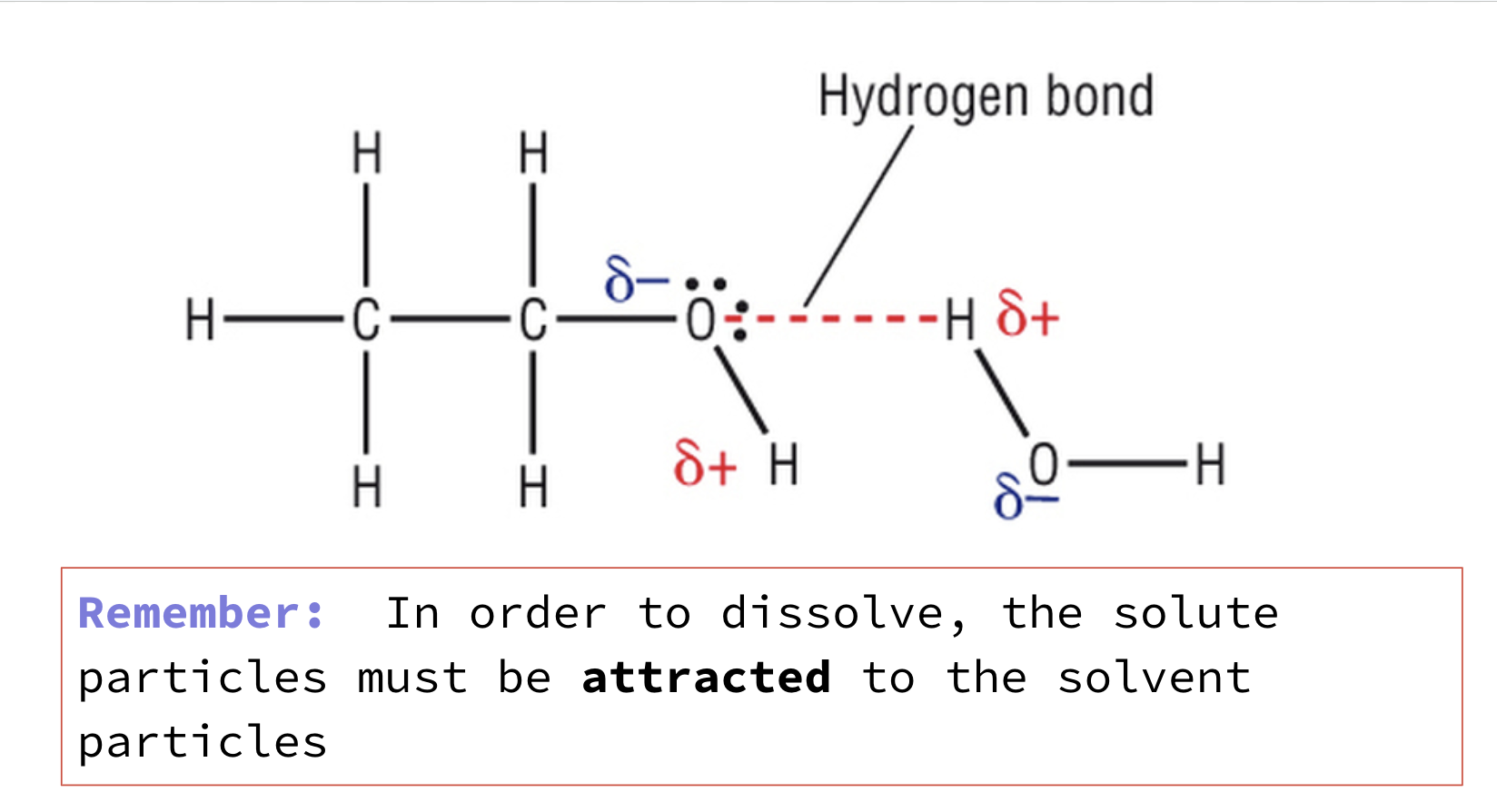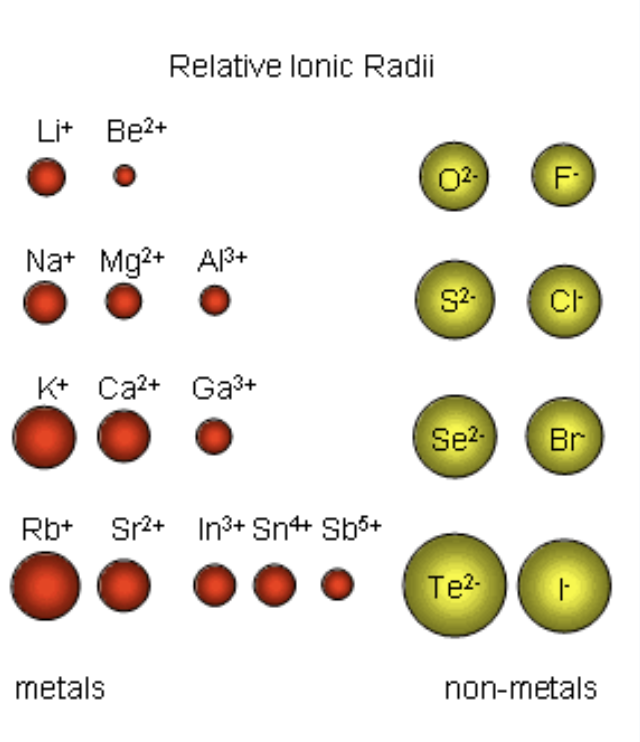unit 4: solutions and solubility
1/13
There's no tags or description
Looks like no tags are added yet.
Name | Mastery | Learn | Test | Matching | Spaced |
|---|
No study sessions yet.
14 Terms
Solution:
homogeneous mixture
Solute:
substance being dissolved, part of the solution present in the smaller amount
Solvent:
part of the solution present in the greatest amount, does the dissolving
Miscible:
liquids that mix completely
Immiscible:
unable to mix
SOLUBILITY AND FORCES BETWEEN PARTICLES
In order to dissolve:
the solute particles must be attracted to the solvent particles
the intermolecular forces between solute and between solvent particles need to be broken
Types of Solute & Solvent Particles
Ionic and polar solutes will dissolve in polar solvents because particles of both are charged
Polar solutes will dissolve in polar solvents
Non-polar solvents dissolve non-polar solutes due to similar intermolecular forces (no full or partial charges)
Recall: ∆EN of non-polar molecules is < 0.5 (0.4 and below), polar molecules is between 1.6-0.5, and ionic compounds is 1.7 and above
This relationship is summarized in the expression:
“Like dissolves like”
“Like dissolves like”

2. Temperature
For Solids:
Increases in temperature causes increased solubility as a higher in temperature causes:
Spaces between particles increase resulting in more space for particles of solute to dissolve
Solvent particles have greater kinetic energy which results in more frequent and energetic collisions with the solute
temperature for gases
Increases in temperature causes decreased solubility
Molecules in gaseous state have higher kinetic energy than those dissolved in the solvent
Increasing temperature provides energy for gas molecules to escape solution
3. Pressure
Pressure is force per unit area
No effect on solubility of solids or liquids
Solubility of a gas is directly proportional to the pressure of that gas above the liquid
Increased pressure causes increased solubility of a gas
4. Size
Covalent Compounds
Increased molecule size (molecular compounds) causes decreased solubility
Molecules like methanol (CH3OH) have a non-polar (CH3) end and a polar (OH) end
The –OH group predominates and allows the entire molecule to be soluble in water (polar molecule)
Increasing the size of the non-polar portion decreases solubility

size and ionic compounds
If the attraction between the ions is very strong, they will be difficult to separate, and won’t be soluble in water
Solubility usually increases with increased ion size and decreased ion charge (higher, more concentrated charge, stronger attraction between ions, harder to separate, harder to dissolve)

Factors that affect rate of dissolving
How quickly a solute dissolves in a solvent will increase when each of the following is increased:
Agitation or mixing: increases number of collisions
Temperature: increased kinetic energy causes more frequent collisions
Surface area: more solute is in direct contact with the solvent